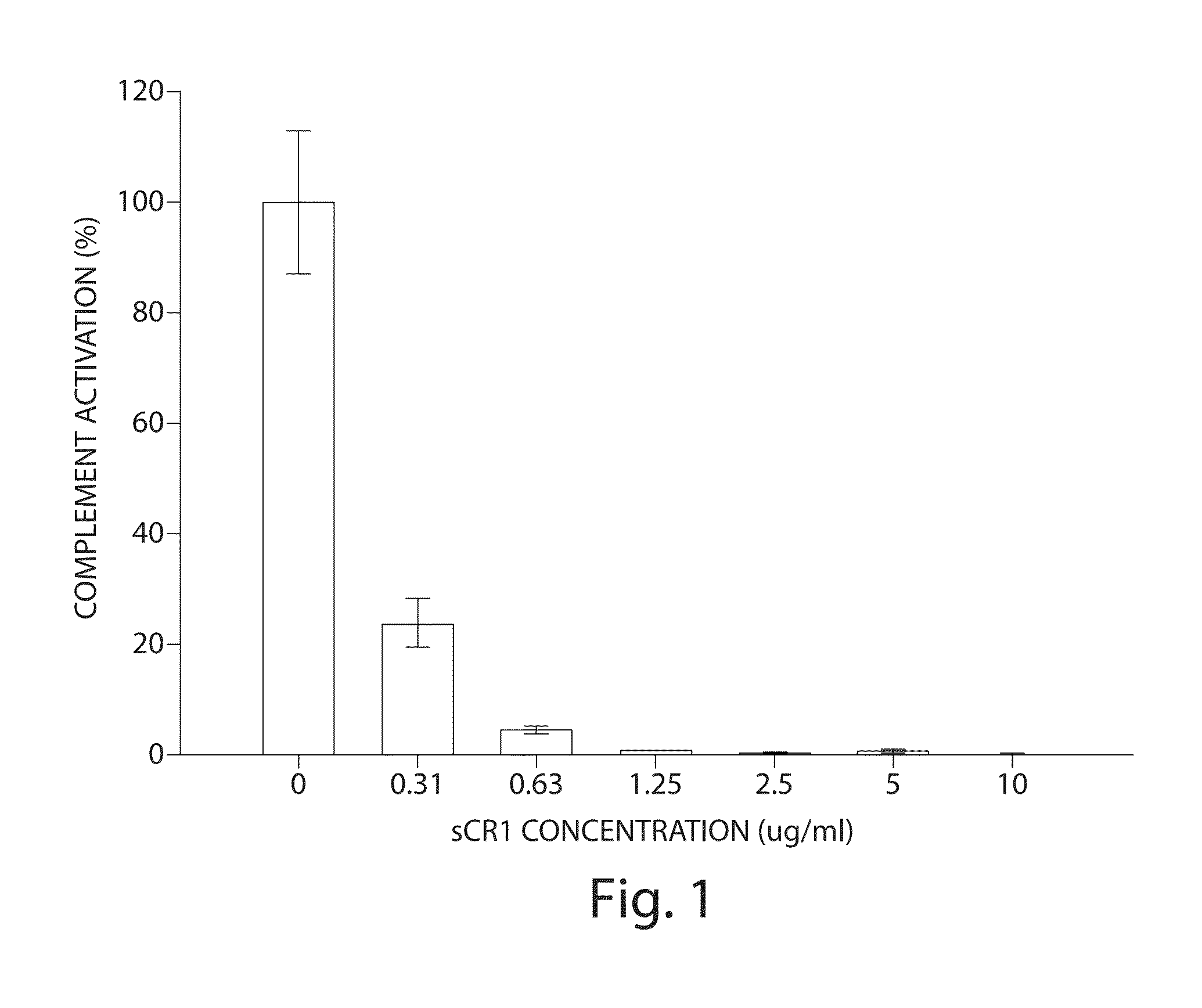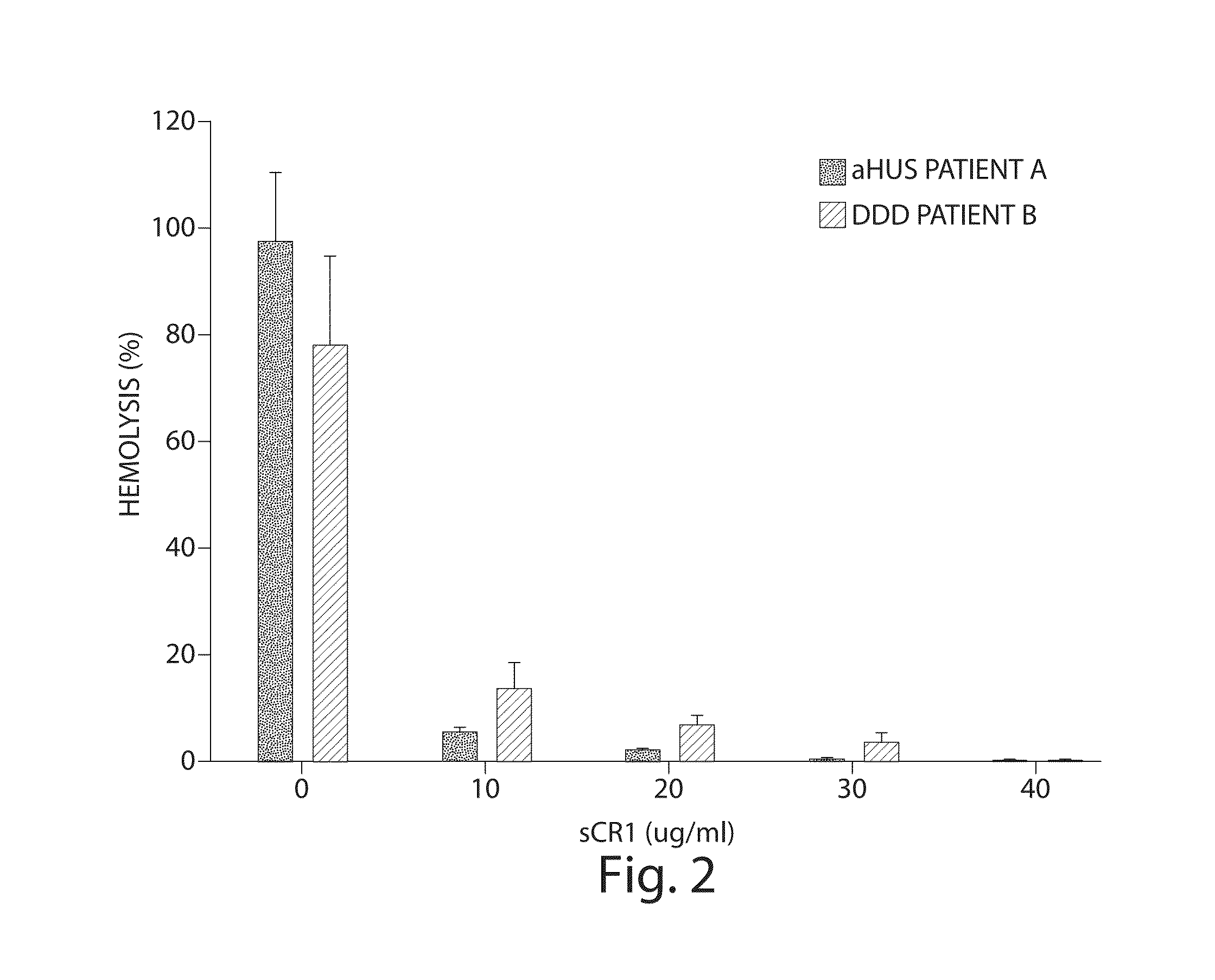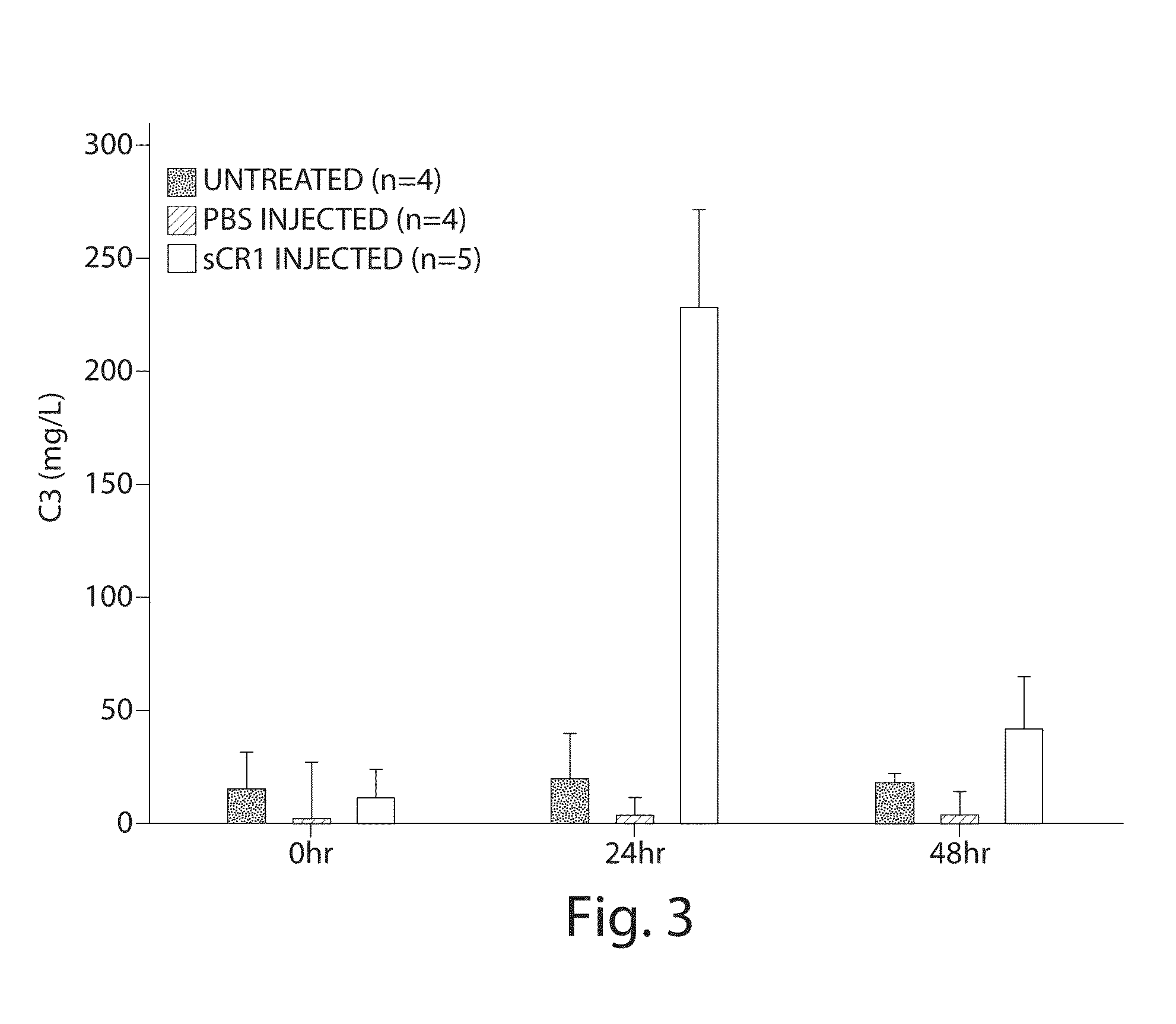Treatment Of Chronic Nephropathies Using Soluble Complement Receptor Type I (sCR1)
a technology of soluble complement receptor and nephropathy, which is applied in the direction of drug composition, peptide/protein ingredient, peptide source, etc., can solve the problems of kidney damage, kidney microvascular thrombosis, harm kidney function, etc., and achieves the reduction of further c3 deposition, reduce kidney damage, and reduce further c3 deposition
- Summary
- Abstract
- Description
- Claims
- Application Information
AI Technical Summary
Benefits of technology
Problems solved by technology
Method used
Image
Examples
example 1
[0068]Recombinant soluble complement receptor type I (sCR1) consisting of the extracellular portion of human CR1, produced in CHO cells, was used in the following experiments. The sCR1 was obtained from Celldex Therapeutics, Inc. (Needham, Mass.).
[0069]Alternative pathway (AP) complement activity was evaluated in the fluid phase using the Wieslab complement AP assay kit (Wieslab AB, Lund, Sweden). This method combines principles of the hemolytic assay for complement activation with the use of labeled antibodies specific for a neoantigen produced as a result of complement activation. The amount of neoantigen generated is proportional to the functional activity of the alternative pathway.
[0070]Twenty (20) microliters of pooled normal serum (Innovative research, Cat#IPLA-CSER, Novo, Mich.) was diluted in 340 μl of diluents (Wieslab complement AP assay kit; Wieslab AB, Lund, Sweden) containing specific blockers to ensure that only the alternative pathway is acti...
example 2
Cfh− / − In Vivo Mouse Study
[0076]Complement factor H (CFH) deficiencies have been associated with dense deposit disease (DDD) and aHUS (Fakhouri et al., Kidney International, 78:279-286 (2010). Gene-targeted CFH-deficient mice (Cfh− / −) spontaneously develop low plasma C3 levels and deposition of C3 along the murine glomerular basement membrane, analogous to human dense deposit disease (Pickering, M C, et al., Nat. Genet., 31:424-428 (2002)). Accordingly, Cfh− / − mice were selected as an animal model for this experiment.
[0077]Five Cfh− / − mice, a gift from Drs. Matthew Pickering and Marina Botto of the Imperial College London, were injected with sCR1 at a dose of 50 mg / kg (tail vein injection). As controls, one littermate was injected with the same amount of PBS and another one littermate was left untreated. Sera were collected by tail bleeding at 0, 24 and 48 hours. Serum C3 levels were measured using the mouse complement C3 kit (Kamiya Biomedical, Seattle, Wash.). C3 levels in sCR1-in...
PUM
 Login to View More
Login to View More Abstract
Description
Claims
Application Information
 Login to View More
Login to View More - R&D
- Intellectual Property
- Life Sciences
- Materials
- Tech Scout
- Unparalleled Data Quality
- Higher Quality Content
- 60% Fewer Hallucinations
Browse by: Latest US Patents, China's latest patents, Technical Efficacy Thesaurus, Application Domain, Technology Topic, Popular Technical Reports.
© 2025 PatSnap. All rights reserved.Legal|Privacy policy|Modern Slavery Act Transparency Statement|Sitemap|About US| Contact US: help@patsnap.com



